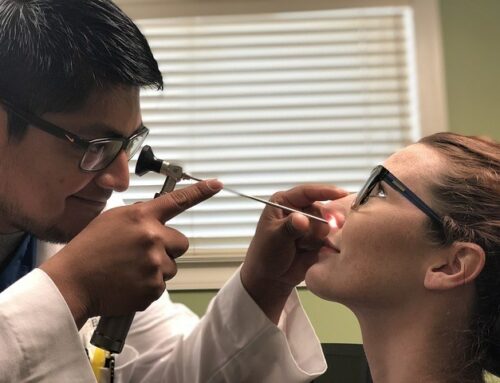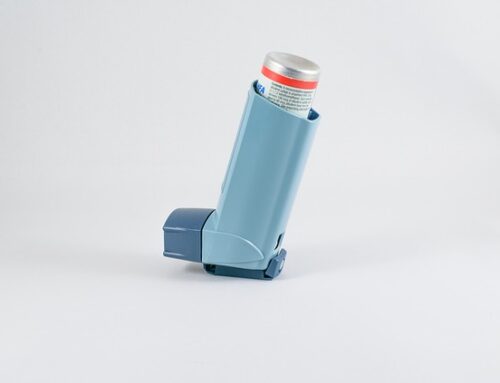Table of Contents
Medical Disclaimer: If you’re suffering from any dust mite allergy, do consult a doctor and seek medical advice. This article is not written by a medical professional, health expert or a doctor. Thus, it is not a substitute for medical diagnosis or treatment.
Dust mites can be a persistent problem if you’re highly sensitive to the allergen. Dust mites allergy can cause a series of complications in your life with varying severity. It may be as slight as having a couple of sneezes or to the extreme of suffering nasal blockage.
This article will give you an idea of how to treat dust mites allergy but I strongly suggest that you consult a doctor if you’re suffering from it.
What Are Dust Mites?
Dust mites are microscopic creatures that belong to the Arachnid family that happen to be present in most household. These pests thrive in a warm and humid environment, specifically with a temperature between 20°C to 25°C (68°F- 77°F) and relative humidity of 70% to 80%.
You can’t see dust mites with your bare eyes as these creatures are as tiny as 0.3 mm (0.01 inch). Therefore, you’ll be oblivious to dust mites in your home until you suffer from dust mites allergy.
It wasn’t the dust mite that is causing allergic reactions, but rather the protein that was found in its excretion. Dust mites excretions is a fraction of the creature’s size and can easily be inhaled when you’re exposed to them.
Dust Mites Allergies Symptoms
As my son has suffered from dust mites allergy for more than 1 year, I’m pretty clear about the symptoms associated with the allergen. For a start, you may experience unexplainable bouts of sneezing or red, teary eyes at home. Initially, you may suspect that it’s due to dust or pollen coming into your home. But when you have the windows closed and the symptoms persist, dust mites are often a suspect.
After a few days or a week, you’ll find the symptoms worsen if they are untreated. You may start developing a runny nose and start coughing as your throat becomes uncomfortable. These symptoms can be uncomfortable to the extent of disrupting your daily life.
But that’s not the worse of suffering from dust mite allergy. As I was then oblivious to the existence of dust mites, my son soon complained of difficulty in breathing. It turned out that his nasal passage was inflamed, and reduce the passageway for air to pass through.
Needless to say, I made an appointment with a doctor to have the symptoms figured out.
I’ll suggest you do the same if you’re suspecting that you’re suffering from dust mites allergy. Don’t underestimate the severity of the symptom as there’s a risk for children developing asthma and adults who already suffering from it aggravating their condition.
How Are Dust Mites Allergies Diagnosed
For my son, the doctor suggested that it was a case of dust mite allergy based on the symptoms observed. As dust mites allergies are a common problem for both adults and children, it wouldn’t be surprising for the doctor to make a prognosis quickly.
However, there are some cases where further tests may be required. MayoClinic specifies two different tests that an individual may undergo to truly confirm that the allergy is due to dust mites.
The first involved pricking a tiny amount of allergens, including dust mites onto your skin. This skin test is intended to verify which type of allergen that you’re sensitive to. If you’re allergic to dust mites, you’ll show typical symptoms on your skin after 15 minutes or so.
Occasionally, blood tests are conducted as an alternative to the skin test. Your blood sample is acquired and tested for the presence of antibodies that are produced in response to the dust mites allergen.
Treatment For Dust Mites Allergy

Depending on the severity of your condition, the doctor may prescribe different types of medications or treatments. My son was given anti-histamine, which is meant to reduce allergy reactions like sneezing, coughing, and runny nose.
For his nasal inflammation, he was given nasal sprays such as Nasonex and Avamys. Both are corticosteroid sprays and it is advisable that you consult your doctor before using any of them.
Healthline also highlights other forms of treatments including immunotherapy, cromolyn sodium, and leukotriene modifiers.
Your doctor may also recommend using a nasal irrigation device to cleanse and remove mucus from your sinuses.
Preventing Dust Mites Growth At home
Preventing is always better than a cure for dust mites allergies. The medications that you’re prescribed are not the ultimate solution. Once the effects wear off, the symptoms will pop up again if nothing is done about the dust mites in your home.
To stop dust mites allergy for good, you’ll need to ensure your home is inhabitable for dust mites. This means disrupting its source of food, which are the millions of dead skin cells you’re shedding daily, and lowering the humidity to the ideal level for humans.
Basic housekeeping is a must and you have to do it regularly. Make it a point to clean the bedroom regularly, and vacuum or steam-clean carpets in your home. These areas are where you’ll find a high concentration of dust mites.
You may also want to get a HEPA air purifier, as I did. An air purifier helps to remove dust mites or its fecal pellets that are floating in the air. Also, I’ll suggest that you replace your vacuum with one equipped with a HEPA filter as you go about cleaning your home.
Final Thoughts
It’s impossible to remove every single living dust mite in your home. But it’s possible to reduce its growth and population to the extent that you don’t suffer from the allergy any longer.
Getting appropriate treatment is crucial when you or your family is suffering from serious dust mites allergy symptoms. But keep in mind that prevention is the best strategy in keeping your home free of dust mites.
Related:






Leave A Comment